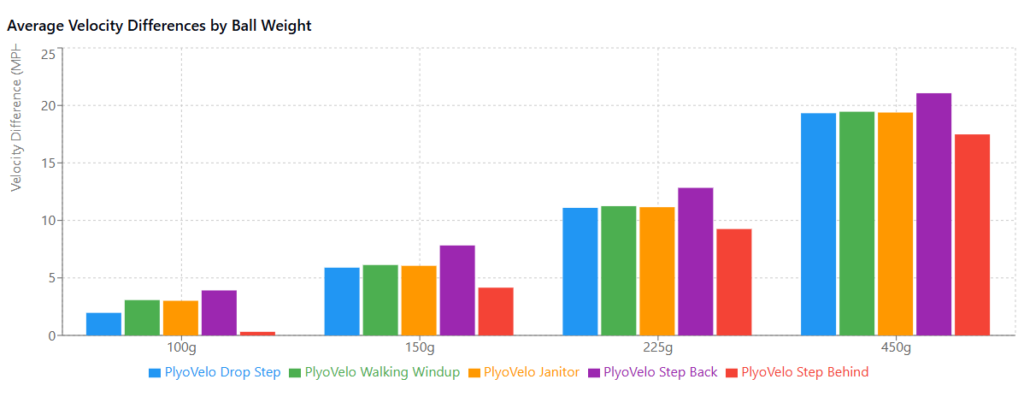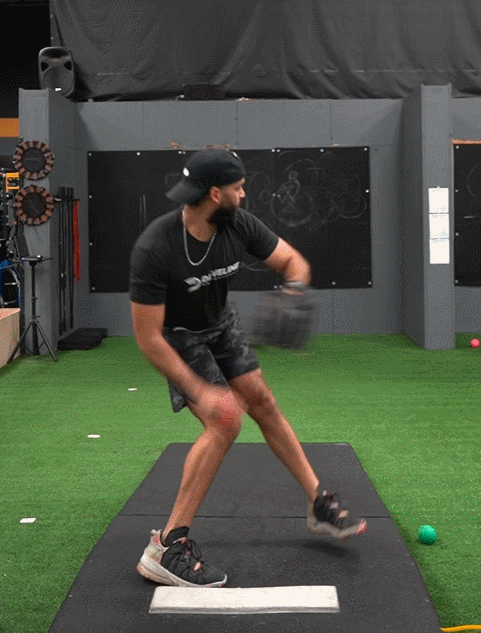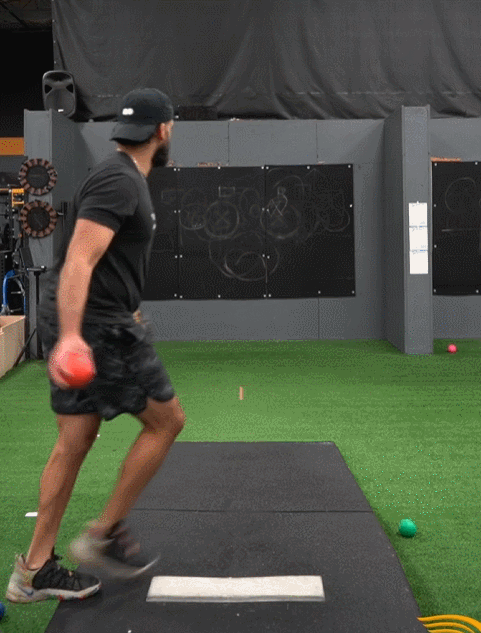On this planet of baseball participant improvement, few subjects generate as a lot dialogue as the connection between weighted ball coaching and throwing velocity. At Driveline Baseball, we’ve constantly emphasised the significance of data-driven approaches to coaching prescription. At present, we’re excited to share up to date insights from our in depth database of athlete outcomes – particularly geared across the relationships between how laborious you throw PlyoCare balls in opposition to how laborious you throw off a mound!
Understanding the Velocity-Weight Relationship
Our newest evaluation examined 1000’s of throws throughout a number of implement weights, from light-weight 100-gram balls to heavier 450-gram coaching balls. The connection between ball weight and throwing velocity follows a transparent sample, however with some stunning nuances throughout completely different drill varieties.
The Drop Step Revelation

One of the vital fascinating findings challenges our earlier understanding of Drop Step throws. Whereas we traditionally estimated a modest half-mile-per-hour improve in velocity in comparison with baseball throws, our complete knowledge evaluation reveals a extra complicated image. Drop Step velocities really present related patterns to different plyo drills, suggesting that drill and ball weight prescription might be modified – doubtlessly including within the newer incremental PlyoCare balls (orange, purple, darkish inexperienced) into the usual set of throws!


Weight-Particular Patterns


The information reveals distinct patterns throughout completely different ball weights:
Light-weight Plyo Balls (100g)
Anticipated Velocity Relationships: 100g Ball Weight
These implements enable athletes to keep up velocities closest to their mound velocities, with minimal drop-off throughout all drill varieties. This makes them significantly invaluable for high-intent coaching classes targeted on motion patterns.


Medium Weight Implements (150-225g)
Anticipated Velocity Relationships: 150g Ball Weight
Anticipated Velocity Relationships: 225g Ball Weight
We see a predictable decline in velocity as weight will increase, however the relationship stays remarkably constant throughout completely different drill varieties. This consistency offers us confidence in prescribing these implements for particular coaching diversifications.


Heavy Ball Coaching (450g)
Anticipated Velocity Relationships: 450g Ball Weight
The speed differential turns into way more pronounced with 450g implements, although the pattern measurement is notably smaller. This means coaches needs to be significantly considerate about prescribing these heavier implements, particularly in higher-velocity athletes.


Implications for Coaching
These findings have important implications for a way we strategy weighted ball coaching. The constant patterns throughout drill varieties recommend that the physique adapts to further weight in predictable methods, whatever the motion sample. This helps validate our systematic strategy to coaching development whereas highlighting the significance of cautious implement choice.
Particular person Response Issues
Whereas these group averages present invaluable insights, particular person response to completely different implements varies. This reinforces our dedication to complete athlete monitoring and individualized coaching prescription. The substantial dataset behind these findings permits us to make extra knowledgeable selections about implement development whereas respecting particular person athlete traits.
Shifting Ahead
Whereas this analysis is a superb instance of Driveline’s dedication to steady studying and evidence-based coaching strategies, we now have different concepts to enhance this work! Notably using our automated Launchpad to generate kinematic and kinetic knowledge from these drills and throws – and in doing so, working biomechanical analyses on extra than simply easy mound pitching and weighted ball throwing from the mound!
By combining large-scale knowledge evaluation with sensible utility, we proceed to refine our understanding of how completely different coaching implements have an effect on throwing efficiency. Keep tuned for extra analysis printed by our workforce!











